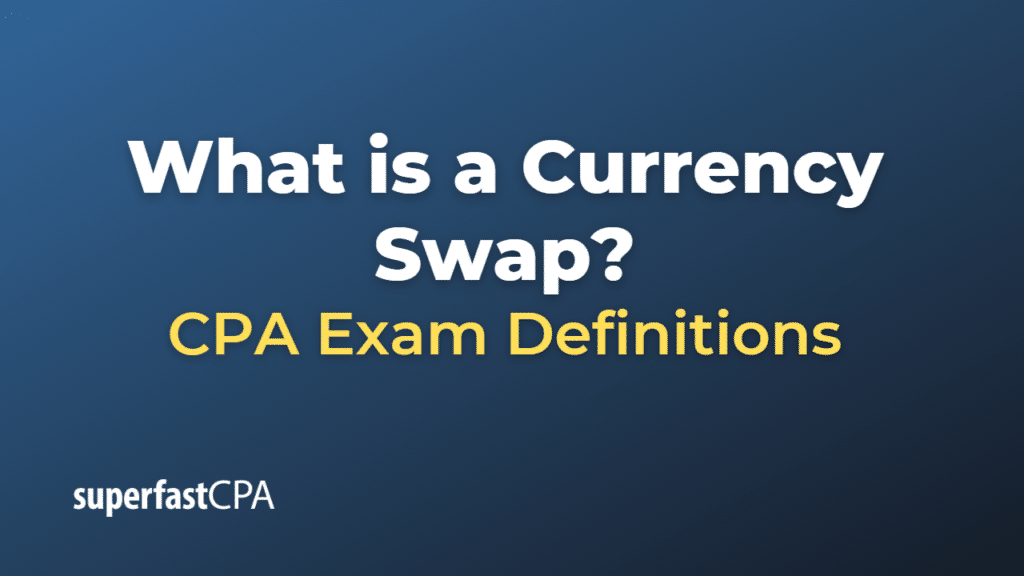Currency Swap
A currency swap is a financial derivative contract between two parties to exchange certain amounts of different currencies at the outset and repay over time according to agreed-upon terms. The transaction involves both the principal amount and interest payments in one currency for a similar in another currency.
Currency swaps are often used to obtain foreign currency loans at a better interest rate than a company could obtain by borrowing directly in a foreign market or as a method of hedging transaction risk.
Here’s a basic outline of a typical currency swap:
- Initial Exchange: At the start of the contract, the two parties exchange principal amounts in the two different currencies. The exchange is based on the current spot exchange rate between the two currencies.
- Periodic Interest Payments: During the life of the swap, both parties make interest payments to each other in the currency of the principal amount received. The interest rates can be fixed or floating and are agreed upon at the outset of the swap.
- Final Exchange of Principal: At the end of the contract, the parties re-exchange the principal amounts, which will be the same as at the start of the contract, regardless of the current spot exchange rate.
It’s important to note that these transactions are off-balance-sheet, meaning they do not appear on a company’s balance sheet. However, the interest payments will affect the company’s income statement.
Example of a Currency Swap
Let’s consider a hypothetical example involving two companies: a U.S. company (USCo) and a European company (EUCo).
USCo wants to expand its operations in Europe, and it needs €10 million to fund this expansion. Meanwhile, EUCo is looking to expand its operations in the U.S., and it needs $12 million. However, each company finds that it can get a better interest rate in its home country.
So, USCo and EUCo decide to enter into a currency swap. Here’s how it could work:
- Initial Exchange: USCo borrows $12 million in the U.S. at a favorable interest rate and EUCo borrows €10 million in Europe at a favorable interest rate. They then exchange these principal amounts. So, USCo now has the €10 million it needs, and EUCo has the $12 million it needs.
- Periodic Interest Payments: Let’s say the interest rate on the U.S. loan is 3% and the interest rate on the European loan is 2%. Every year, USCo will pay EUCo 2% of €10 million, and EUCo will pay USCo 3% of $12 million. These payments are usually netted against each other to minimize the amount of money that actually needs to be transferred.
- Final Exchange of Principal: At the end of the swap agreement, which could be several years in the future, USCo and EUCo re-exchange the original principal amounts. So, USCo returns the €10 million to EUCo, and EUCo returns the $12 million to USCo. This exchange is made regardless of the current exchange rate between the two currencies.
In this way, each company gets the funds it needs in the currency it needs, and they can potentially save on interest costs. This is a simplified example, and actual currency swap transactions can be more complex, but it illustrates the basic idea.













